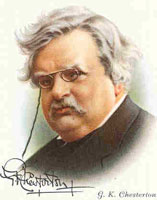The bard did not answer. For a long moment he held the harp lovingly in his hands and gently touched the strings, then with a quick motion raised the beautiful instrument and smashed it across his knee.
Taran cried out in anguish as the wood shattered into splinters and the harp strings tore loose with a discordant burst of sound. Fflewddur let the broken fragments drop from his hands.
“Burn it,” he said. “It is wood well-seasoned.”
Archives for 2018
Fflewddur’s harp
You can’t win with insults
[D. H.] Lawrence tells me that because I have been to a public school I am a eunuch. Well, what about it? I can produce medical evidence to the contrary, but what good will that do? Lawrence’s condemnation remains. If you tell me I am a scoundrel I may mend my ways, but if you tell me I am a eunuch you are tempting me to hit back in any way that seems feasible. If you want to make an enemy of a man, tell him that his ills are incurable.
—George Orwell, The Road to Wigan Pier
The dilemma of creativity
My brain is fermenting, and I’m not sure whether it’s making wine or just having gas.
Coming soon – Writer’s Block: An insider’s guide
That book I wrote the other day? Looks like I will indeed be releasing it, probably in late August or early September. Watch these non-blank pages for updates.
Herewith, a Cover Design:
Writing a book in one day! (Sort of)
So on Wednesday, whilst brooding over my lack of productivity through the entire house-move kerfuffle, I came up with a perfectly silly idea for a novelty book, or as they are called in the trad publishing trade, ‘non-book’. I told my Gentle Editor, Wendy S. Delmater, the idea. She thought it was amusing enough to put in some effort and try it on a dog. We agreed to confer online Friday afternoon.
So today, beginning at about 12:30 p.m. Frozen North Standard Time, I started furiously typing any old gag that would fit the idea. The beginning and ending were easy. Filling out the middle took a little longer. About 4:00 I began formatting the text in InDesign, and at 7:03 precisely I sent the PDF to my beta reader, the talented and cover-designer-ly Sarah Dimento. She is not a dog, but she does have two cats, and no disapproval being met with from that quarter, I have decided to throw the thing out there and see what happens.
I call it Writer’s Block: An Insider’s Guide.
It begins with ‘This page intentionally left blank’, and goes on from there. If there is a way of not writing books that I have failed to mention in its voluminous pages, I will eat the hat that I haven’t got.
Warning: This book will not tell you how to cure writer’s block. At best, it will give you some of the kind of company that misery loves, and maybe a few laughs. But perhaps that’s enough.
The editor at work
One step forward, two faceplants
June has not been particularly kind to us. The move took a lot out of me physically, and a fair amount out of the Beloved Other. Until a few days ago I was having severe asthma attacks from all the heavily pollinated dust that had been dislodged from under furniture and behind bookcases, not to mention the depths of a ruinous old carpet that could not be properly hoovered because of its tendency to spit up its own fibres and strangle the machine with long threads of carpety stuff. At one point I had a coughing fit whilst driving, so intense that I nearly blacked out, swerved off the road, and would have driven into an open pit on a construction site if I had not banged against a friendly K-rail and bounced back into the stream of traffic.
Just about the time I got topsides on the asthma, my right knee gave out and I can no longer finish the work of moving. Unpacking is a wild Technicolor dream. I have been hobbling about the new flat on crutches, since my leg won’t bear my weight properly. The quadriceps tendon, you see, passes over the head of the thighbone on its way to the kneecap, and I (so my doctor told me years ago, when I had a similar injury) have an odd sort of rough patch or abrasion on the cartilage there. Ordinarily it does no harm, but if the tendon becomes inflamed, it catches on the rough spot and won’t slide over it. If I am sitting down, I can lift up my left foot straight in front of me like a Christian, but my right foot remains planted on the ground like a megalithic temple. The muscle simply won’t move until the inflammation subsides. It is also quite deliciously painful if I don’t keep my leg extended in just the right position with the right degree of support, and I cannot sleep in that position, so I have been waking up every morning in a fine taking.
Needless to say, my working files are still packed away, though the Beloved Other has done yeoman work to re-shelve a lot of my books; for which I am boundlessly grateful. The Impendices therefore remain impending for the moment. My apologies to all.
Impendix II: The Isles of Light and the Keepers
I had intended to put up a new Impendix every week; but I have been otherwise occupied. Quite suddenly, without much premeditation, the Beloved Other and I have found a new flat that is larger and more congenial to us than the place where I have been living these last seven years. Nearly all of my books and papers are packed in boxes now, some in the new place, some waiting for the movers’ van. Today is the first day that I have had much leisure to give to the promised project, and accordingly I spent some time jotting these notes from memory.
In Färinor, as mentioned previously, apart from starlight, the only important source of light was in the Isles of Light in the midst of the central ocean. It was there that the Maker installed his bright children, the Díoni (the word actually means ‘bright children’ or ‘bright scions’ in the Fair Tongue), to tend his creation, to keep the Light, and to complete the world to its finest details – as the architect of a cathedral will employ carvers of stone and workers in stained glass.
The habitations of the Díoni were scattered widely among the Isles, but they settled most thickly on the islands nearest to Alenna, the midmost, where grew Ynd Urenn, the Tree of the World. It was said that the roots of Ynd Urenn grew all through the deep places of the earth, keeping the lands in their hold, protecting the rock that sustained them. It was also said, though more doubtfully, that the Tree sent unseen tendrils into the upper airs, where they touched the dome of the sky and mingled their life with the light of the turning stars. The especial task of tending Ynd Urenn was given to one of the Díoni, Lysana, who was called the White Queen. None of the Díoni made any lasting dwelling upon Alenna, but the house of the Queen was on the isle nearest to its shores, and she came there more often than any of her people. [Read more…]
Impendix I: The shape of the worlds
After long reflection and consultation, I have decided to go ahead with the project of writing ‘Impendices’. My editorial consultant, the wise and formidable Wendy S. Delmater, has lent her support to the notion of using these posts to advertise my ‘legos’. By that term I mean the more or less original elements in my stories that other people may find sufficiently interesting to want to play with themselves; which is the best way to turn casual readers into lasting fans (and repeat customers). I have discussed the matter in my essai called ‘Legosity’.
(My brain, which as my Loyal Readers know is a foolish and incorrigible thing, thereupon suggested that these fragments of story were not really Impendices at all, but Pro-Lego-Mena. I therefore ordered it to be taken out and shot.)
The methodical part of my mind, however, revolts at the idea of tossing out legos willy-nilly, whichever one seems to be shiniest at the moment. I should like to present these things in some kind of reasonable order, so that my 3.6 Loyal Readers can have some notion of the context. It would be difficult to explain why a particular chess piece, a knight for instance, is interesting and fun to play with, to someone who did not know the object of the game or the shape of a chessboard. So I shall begin, as it were, by describing the contours of the board. [Read more…]
G. K. C. on grandmothers
A commenter on another blog recently wrote two comments, which I here telescope together, as the second was explicitly written as a correction to the first:
If we are to have a stable, functional society, women can have equal rights and political participation, or they can have a functional exemption from moral consequences. They cannot have both.
The disjunction is true and logical, and not only of women, but of human beings generally. But ‘a stable, functional society’ has nothing to do with the case. It is a red herring, and a red herring of a particularly insidious type, because it amounts to denying that the question is one of morals at all. Chesterton made the point very neatly a century ago:
But the whole modern world, or at any rate the whole modern Press, has a perpetual and consuming terror of plain morals. Men always attempt to avoid condemning a thing upon merely moral grounds. If I beat my grandmother to death to-morrow in the middle of Battersea Park, you may be perfectly certain that people will say everything about it except the simple and fairly obvious fact that it is wrong. Some will call it insane; that is, will accuse it of a deficiency of intelligence. This is not necessarily true at all. You could not tell whether the act was unintelligent or not unless you knew my grandmother. Some will call it vulgar, disgusting, and the rest of it; that is, they will accuse it of a lack of manners. Perhaps it does show a lack of manners; but this is scarcely its most serious disadvantage. Others will talk about the loathsome spectacle and the revolting scene; that is, they will accuse it of a deficiency of art, or æsthetic beauty. This again depends on the circumstances: in order to be quite certain that the appearance of the old lady has definitely deteriorated under the process of being beaten to death, it is necessary for the philosophical critic to be quite certain how ugly she was before. Another school of thinkers will say that the action is lacking in efficiency: that it is an uneconomic waste of a good grandmother. But that could only depend on the value, which is again an individual matter. The only real point that is worth mentioning is that the action is wicked, because your grandmother has a right not to be beaten to death. But of this simple moral explanation modern journalism has, as I say, a standing fear. It will call the action anything else – mad, bestial, vulgar, idiotic, rather than call it sinful.
—G. K. Chesterton, ‘The Boy’ (in All Things Considered)
The only real point worth mentioning about ‘functional exemptions from moral consequences’ is that it is morally wrong to exempt anyone from moral standards, which, in so far as they are moral, must be universal if they are not meaningless. Stable and functional societies have been built upon chattel slavery, helotry, human sacrifice, and any number of other wicked and revolting practices. That does not mean that it was either wise or right to do so, or to exempt those societies from the particular moral standards that were outraged by their customs.
Dr. Samuel Johnson observed, as a good Tory opposed to the American war of independence, that the people who yapped the loudest about liberty were the slaveholding planters of Virginia. The inconsistency had to be paid for; and it was, within a century, when the accounts were squared with a million gallons of blood. Yet those slaveholders were paragons of the moral law compared to a good many of our modern opinion-makers and cultural leaders. They should be opposed because they are wrong, for they are wrong; not because they cannot succeed, for they manifestly do succeed.












Recent Comments